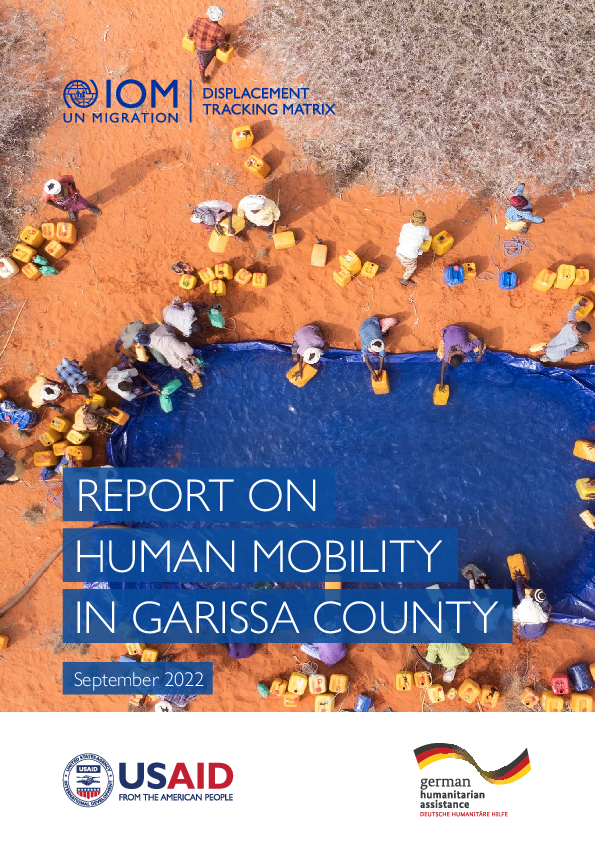-
Countries
-
Data and Analysis
-
Special Focus
-
Crisis Responses
Kenya — Report on Human Mobility in Garissa County (September 2022)

Contacto
NBOIM@iom.int
Idioma
English
Ubicación
Kenya
Fecha de instantánea
Sep 05 2022
Sep 19 2022
Actividad
- Baseline Assessment
Over the past two years, the drought situation in northeastern Kenya has been deteriorating, resulting in approximately 4.4 million people living in the arid and semi-arid lands of Kenya facing acute food insecurity (IPC Phase 3 and above).1 This is the worst drought in over 40 years2; these severe conditions are a direct result of four consecutive failed rainy seasons in the Horn of Africa region, while the fifth upcoming season is also forecasted to be below average.3 While there is solid and regular monitoring of several indicators linked to the impact of drought through the Long Rains Food Security Assessments and the Short Rains Assessments carried out by the National Drought Management Authority (NDMA) and partners, there is no comprehensive quantitative information on the human mobility dynamics because of drought in Kenya. To this end, and in order to inform the humanitarian response, the International Organization for Migration (IOM), deployed its Displacement Tracking Matrix (DTM) in Garissa County, which is indicated as operational priority 1 for multisectoral needs severity, to provide estimates of population mobility dynamics due to drought.
